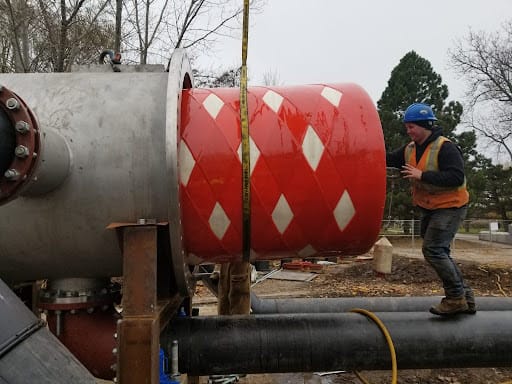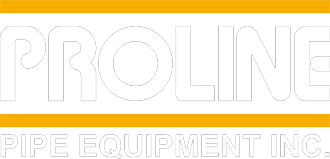In the world of pipeline maintenance, not every challenge calls for a heavy-duty scraper pig or a sophisticated smart pig. Sometimes what operators really need is a workhorse that’s simple, flexible, economical—and forgiving. That’s where foam pigs come in.
While last year we explored the broader pigging process and the types of pigs used across the industry, this time we’re zooming in on one of the most versatile and widely used tools in the field. Whether you’re drying a new line, sweeping out debris, or preparing for hydrotesting, foam pigs are often the first choice for technicians who want reliability without complication.
What Exactly Is a Foam Pig?
A foam pig is a lightweight, flexible polyurethane pig designed to travel through pipelines of varying sizes, bends, and conditions. Unlike rigid pigs that require near-perfect pipeline geometry, foam pigs adapt to the shape of the pipeline, compressing and expanding as needed. This makes them ideal for:
Lines with diameter changes
Older or out-of-round pipe
Applications where metal-bodied pigs might get stuck
Situations requiring gentle cleaning rather than aggressive scraping
Their simplicity is part of their power: no moving parts, no electronics—just engineered foam (and sometimes a coating or wire brush layer) that gets the job done.
Types of Foam Pigs and Their Uses
Foam pigs come in several densities, shapes, and configurations. Choosing the right one can make or break the success of a pig run.
• Low-Density Foam Pigs
Ideal for dewatering and sweeping.
These soft, highly flexible pigs are used immediately after hydrotesting or flushing to remove residual water and push out loose debris.
• Medium-Density Foam Pigs
A balanced option for light cleaning, product separation, and drying tasks.
Often used during commissioning when operators want to ensure a clean, moisture-free pipeline before introducing product.
• High-Density / Urethane-Coated Foam Pigs
Designed for more demanding cleaning.
The urethane coating increases durability, allowing the pig to remove scale, wax, and tougher buildup. Some versions include criss-cross wire brush wraps to add scrubbing capability.
• Bare Foam Cylinders and Bullet-Style Pigs
Economical and extremely adaptable.
Great for short-distance sweeps, plant operations, and multi-diameter piping.
Why Foam Pigs Are a Pipeline Operator’s Best Friend
1. Versatility Across Applications
Foam pigs can be used in transmission lines, gathering systems, facility piping, temporary bypass lines—you name it. They can compress up to 30–50% of their diameter, helping them travel through valves, tees, and transitions that traditional pigs can’t.
2. Cost-Effective Maintenance
Compared to steel-bodied pigs, foam pigs are inexpensive and require no assembly or spare components. They provide maximum value for routine maintenance and commissioning work.
3. Reduced Risk of Getting Stuck
Because they conform to the pipeline’s internal geometry, foam pigs are far less likely to jam in dents, tight bends, or partially obstructed lines. This reduces downtime and avoids costly retrieval operations.
4. Excellent for Dewatering and Drying
Foam pigs absorb and push out liquids exceptionally well. Operators often run a train of foam pigs to achieve near-complete dryness before product introduction.
5. Safe for Sensitive or Aging Infrastructure
Foam pigs apply gentle cleaning pressure, making them ideal for older pipelines or situations where aggressive cleaning could cause damage.
Common Applications for Foam Pigs
Operators rely on foam pigs for a variety of field and plant tasks, including:
Dewatering after hydrotesting
Removing construction debris
Drying pipelines before start-up
Product displacement
Light cleaning and sweep operations
Separation during batching processes
Removing residual fluids prior to inline inspection (ILI)
Foam pigs are also used to “condition” a line ahead of an intelligent pig run—ensuring the pipeline is clean and dry enough for accurate data collection.
How to Select the Right Foam Pig
Choosing the best foam pig comes down to three main factors:
1. Pipeline Conditions
Diameter, wall condition, bends, fittings, surface buildup, multi-diameter segments.
2. Application / Job Requirements
Cleaning? Dewatering? Separation? Drying?
Different densities and coatings excel at different tasks.
3. Pigging Frequency
For single-use applications, a simple bare foam pig may be enough. For repeated or longer-distance runs, a coated or wire-wrapped version offers longer life and consistent performance.
If you’re unsure which style fits your application, our team can help evaluate your pipeline conditions and recommend the most efficient option.
Why Foam Pigs Are an Essential Part of Any Pigging Program
While intelligent pigs and scraper tools tend to steal the spotlight, foam pigs quietly handle the bulk of everyday pipeline maintenance. Their ability to navigate challenging line conditions, remove liquids, and prepare pipelines for inspection makes them indispensable across the oil, gas, water, and industrial sectors.
In short, foam pigs offer:
Reliability
Flexibility
Safety
Cost efficiency
Multi-application capability
They may be simple, but they’re foundational to a successful pigging program.
Looking for Foam Pigs for Your Next Project?
If you’re sourcing foam pigs—or need help selecting the right type for your operation—our team is ready to support you. We supply a full range of pipeline foam pigs for cleaning, drying, sweeping, and commissioning applications.


